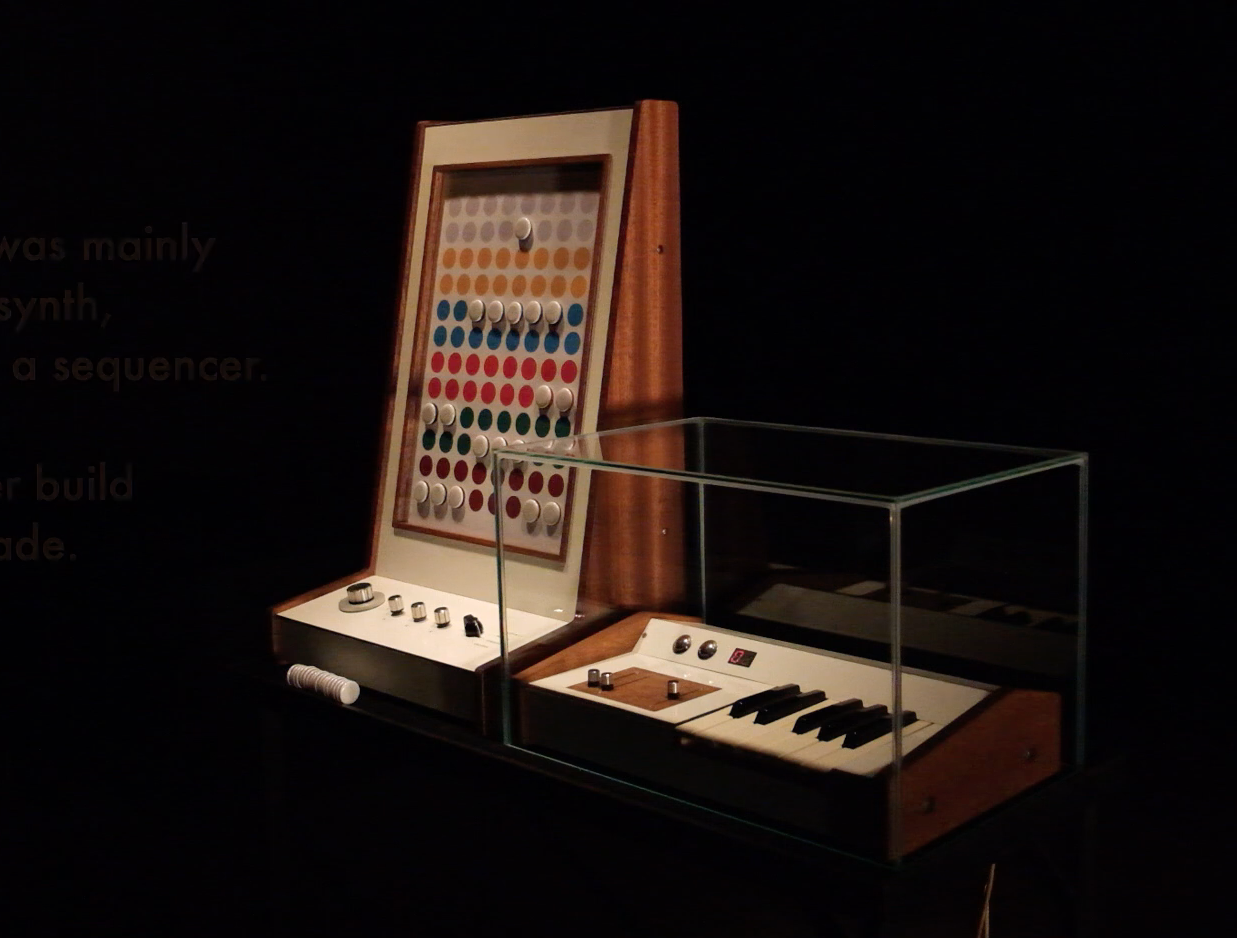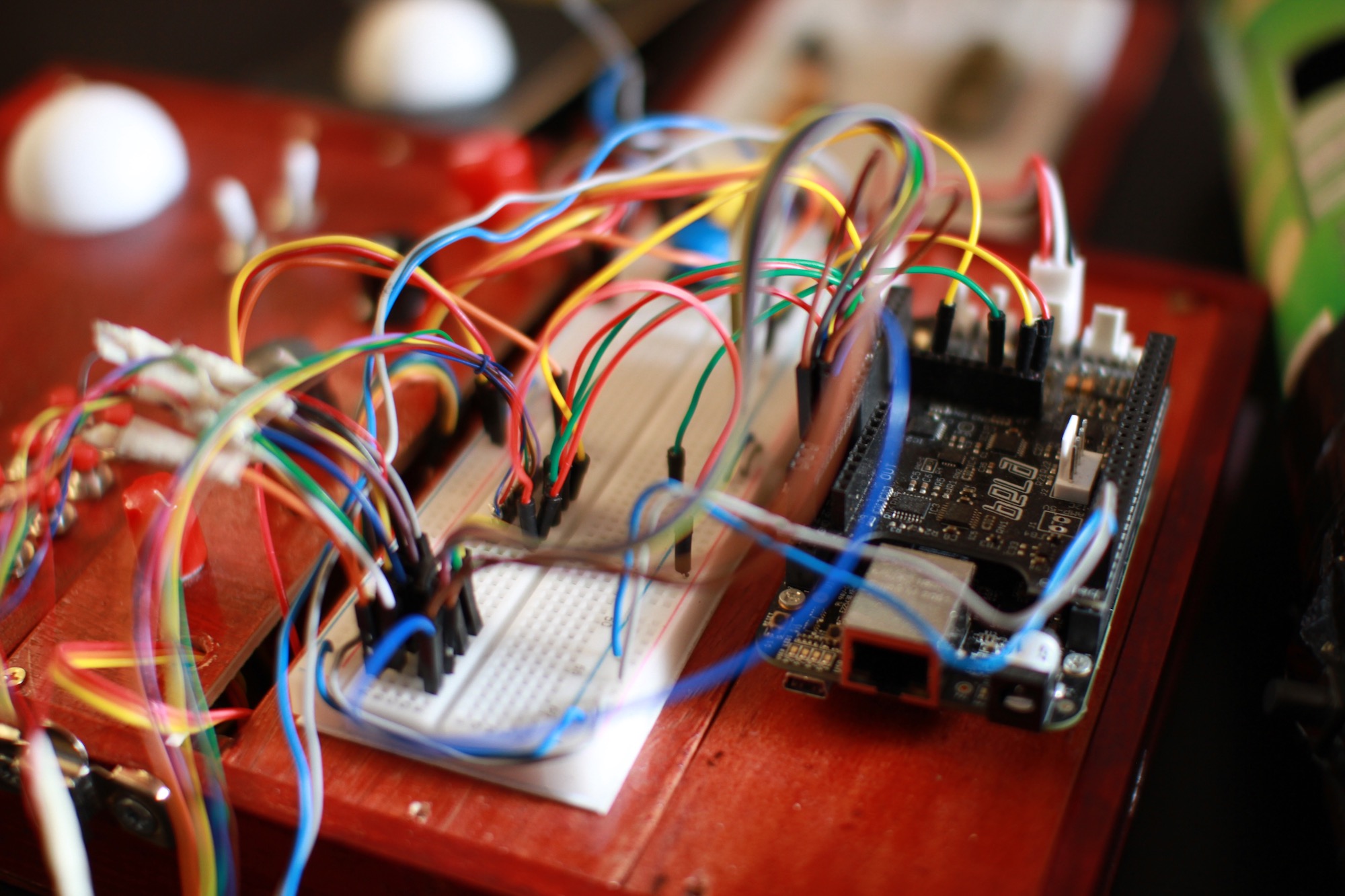Principium 3.1
Magnetic Matrix Sequencer and Sampling Keyboard
Principium 3.1 is a mighty magnetic matrix sequencer and sampling keyboard created by Kris Delacourt. We first saw an earlier incarnation of this instrument on the Bela forum quite some years ago so it gives us great pleasure to host this feature from Kris about the instrument in its most mature form. Over to Kris.
Principium 3.1
Principium 3.1 is the latest instalment in a series of works. This project has taken the form of instruments, installations and vinyl records which have evolved over the past few years and which I’ll describe below.
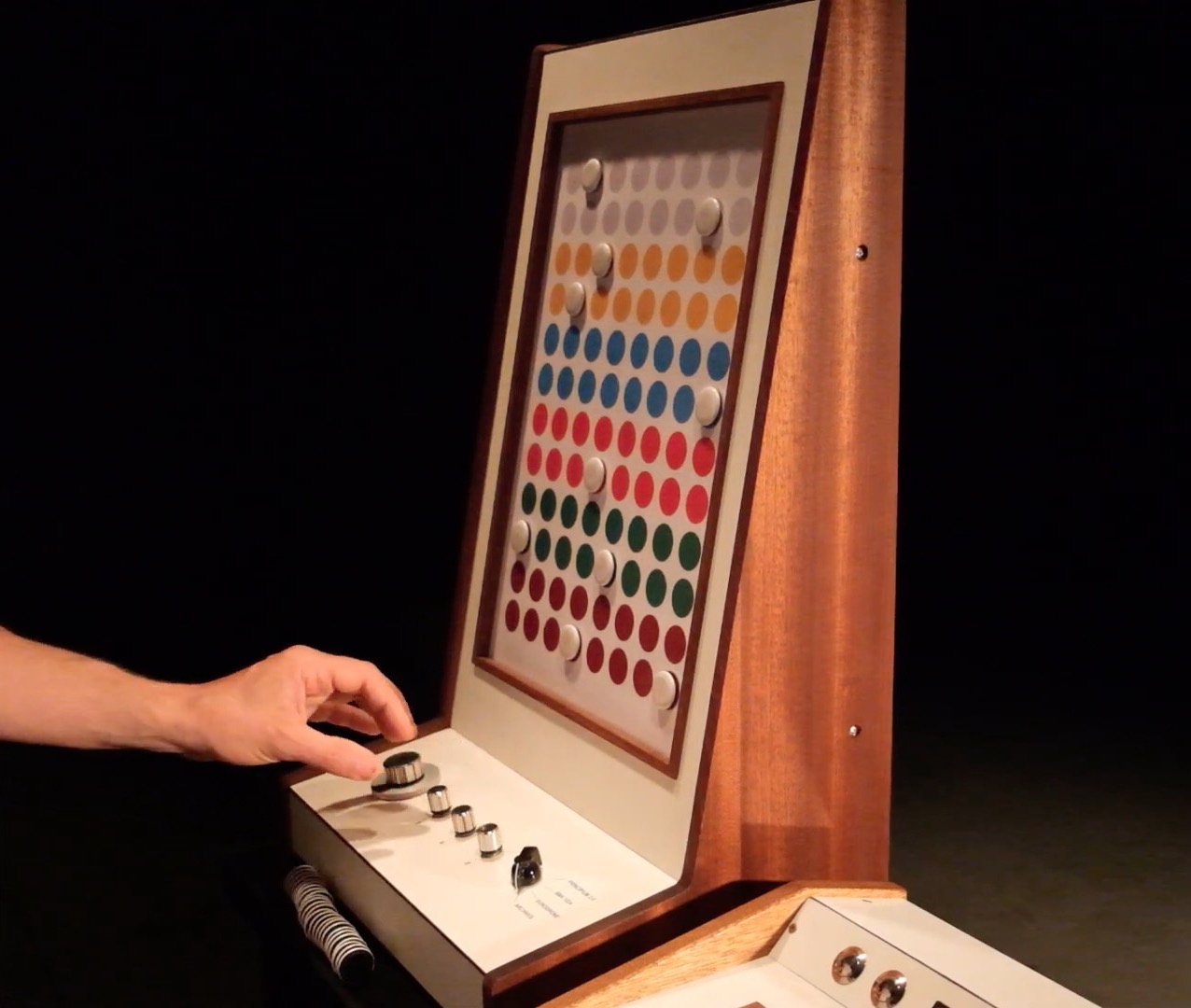
Principium 3.1's magnetic matrix sequencer.
The project began when I was asked to do a reinterpretation of an artwork – to read it as a graphic score. The original artwork consisted of a colourful 8 x 12 matrix, which I interpreted as an 8 step sequence for 12 notes of an octave. This led me down a path of deconstruction, to the point where I had 12 vinyl records, each containing the same single-note piece, but pitched to span the chromatic series.
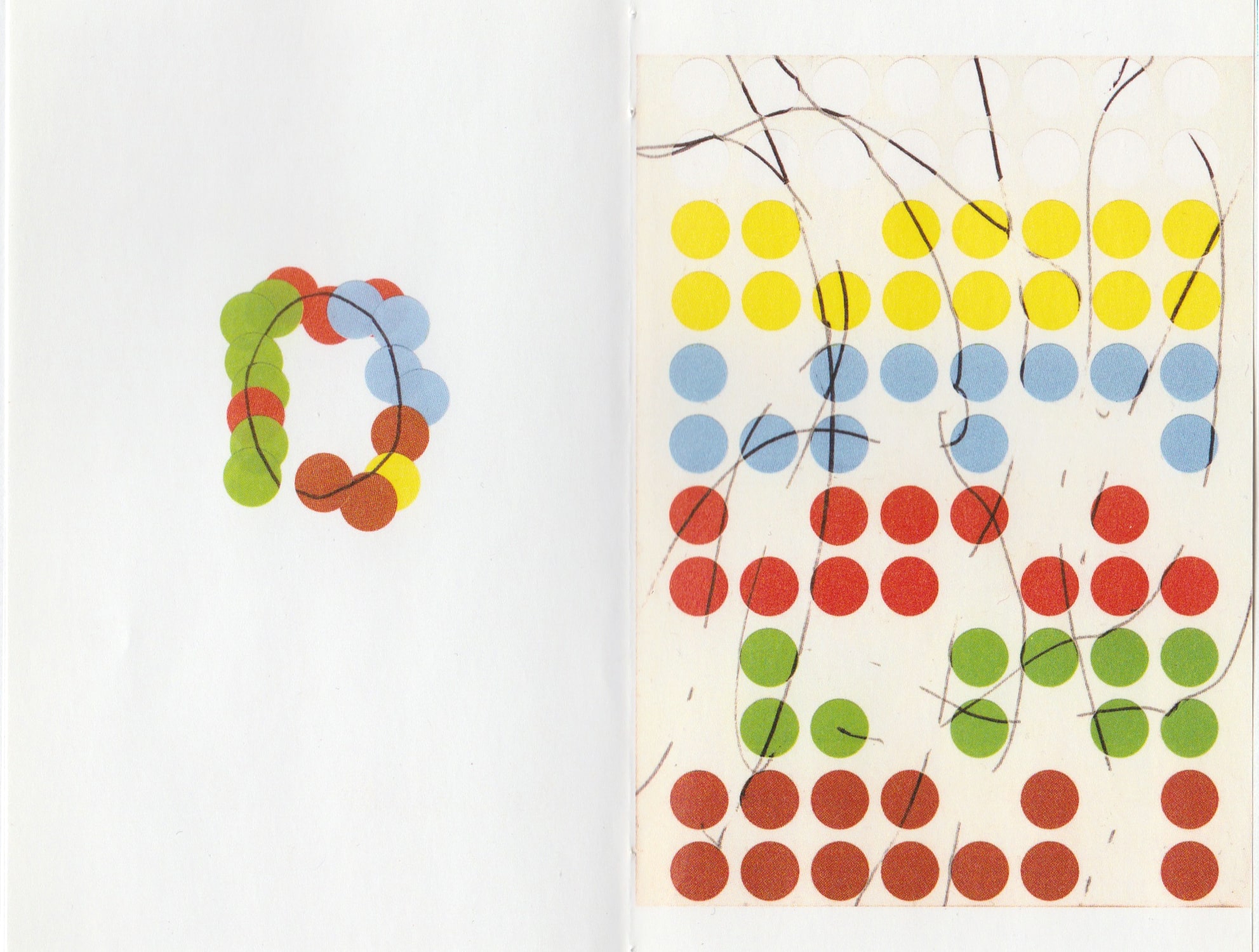
Principium original artwork by Vaast Colson.
I played an eight hour set with those records with the turntables themselves acting as the sequencer. I achieved this by sticking magnets to the turntables and adding a magnetic sensor to turn the sound on the discs into rhythmic patterns.
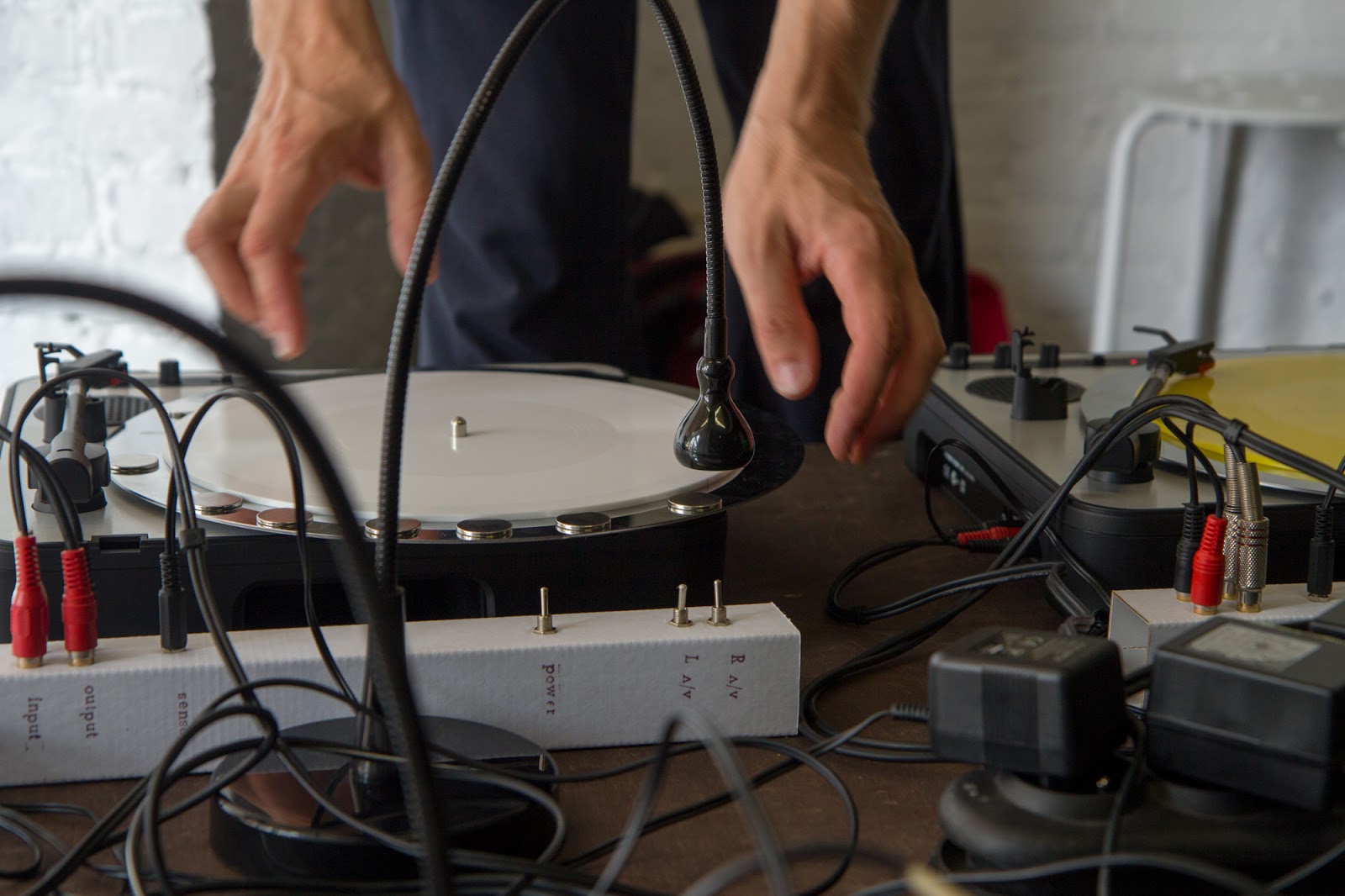
The first incarnation of Principium with turntables and 12 records.
Parts of that set made it onto another vinyl - for more on the series up to that point, and that record, there’s a pretty full explanation in this interview and some more in-depth build pics on my under-maintained blog.
Playing the faders
After that piece it felt like it was time to go back to reconstruction instead, and turn that same idea and that same set of recordings into a playable instrument. I really wanted the equivalent of those twelve records running through a mixer, and to be able to play the faders, 10cc ‘I’m not in love’ style. I put together a proof of concept patch in Ableton, put in some solina-like attack and release controls, and it sounded promising, but I really wanted a standalone physical version. Although the notion of having twelve reel-to-reels with tape loops running around the room is still very appealing, I quickly realised I needed to go digital!
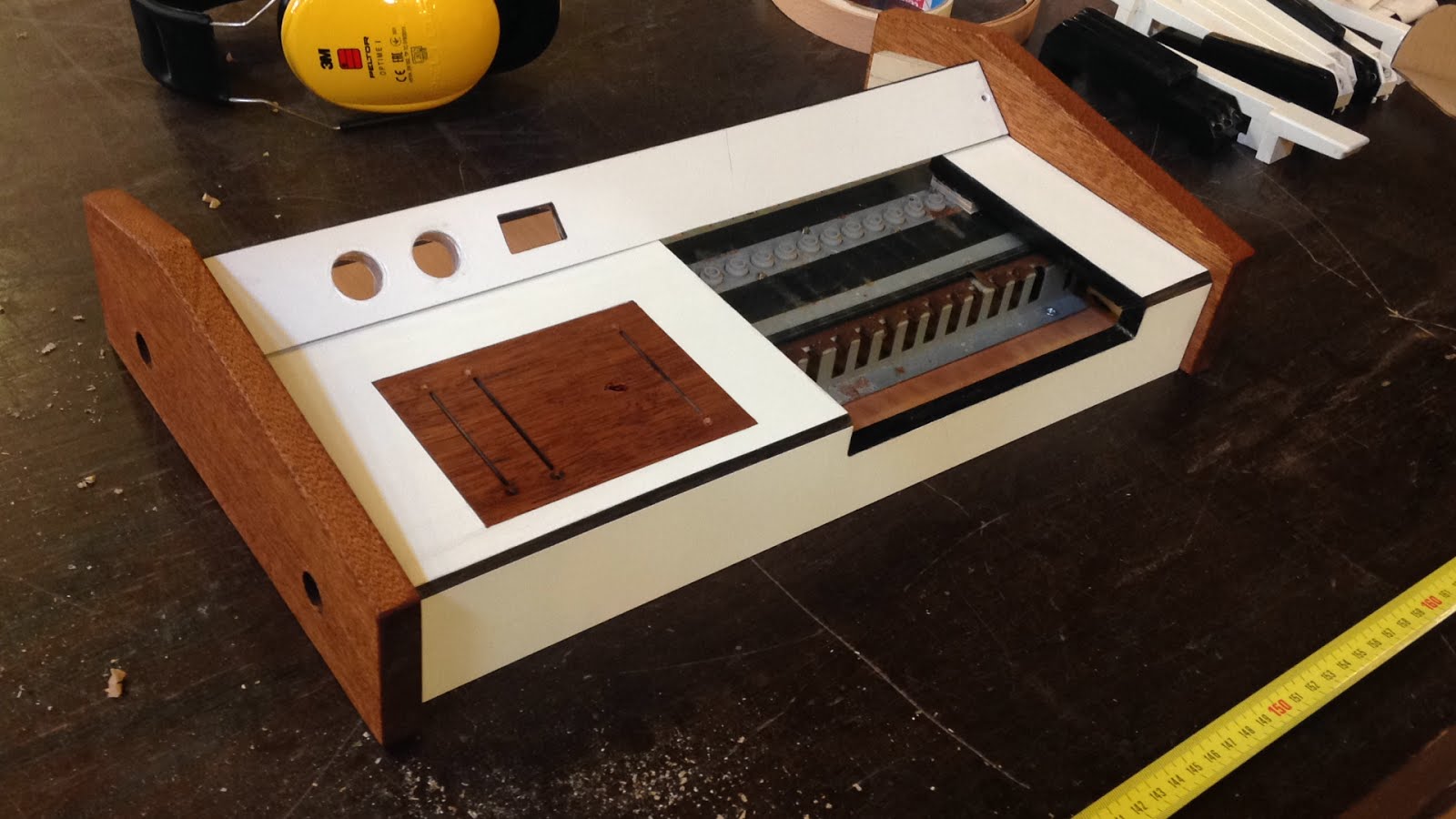
The casing for the keyboard and sliders.
I tried a couple of platforms, but never got it quite right until someone introduced me to Bela. The fact it could run Pure Data was a huge advantage - not that I’m an expert, but I’m comfortable enough with it to get things working. The patch itself is actually pretty straightforward: there are twelve files running continuously, and hitting a key on the keyboard triggers a volume envelope for the corresponding file. That’s all it is, really, plus then some bits and bobs to read files from the SD.
Mixing samples in realtime
In hindsight, I probably could have made it a lot more efficient by loading a single file into an array and reading that same file at twelve different speeds - but I really just coded a direct analogy of those twelve record players. While that may be completely over the top - or plain stupid - the good thing about it is that I now have the option of loading twelve completely different files as a set. Once you go digital, of course, the possibility of having more than one soundbank pops up immediately. My first test for swapping banks was done with a set of random files - old recordings, other people’s songs, whatever I had to hand. That had a really funny feel to it, almost like old radiophonic experiments. It really was a happy accident that turned into the ‘Archives’ preset you see in the video. Speaking of the video, I hope it’s clear that I really like audience interaction. This led me to repurpose the magnet matrix from Principium 1.0, where it was hooked up to a hacked Casio keyboard for people to mess with.
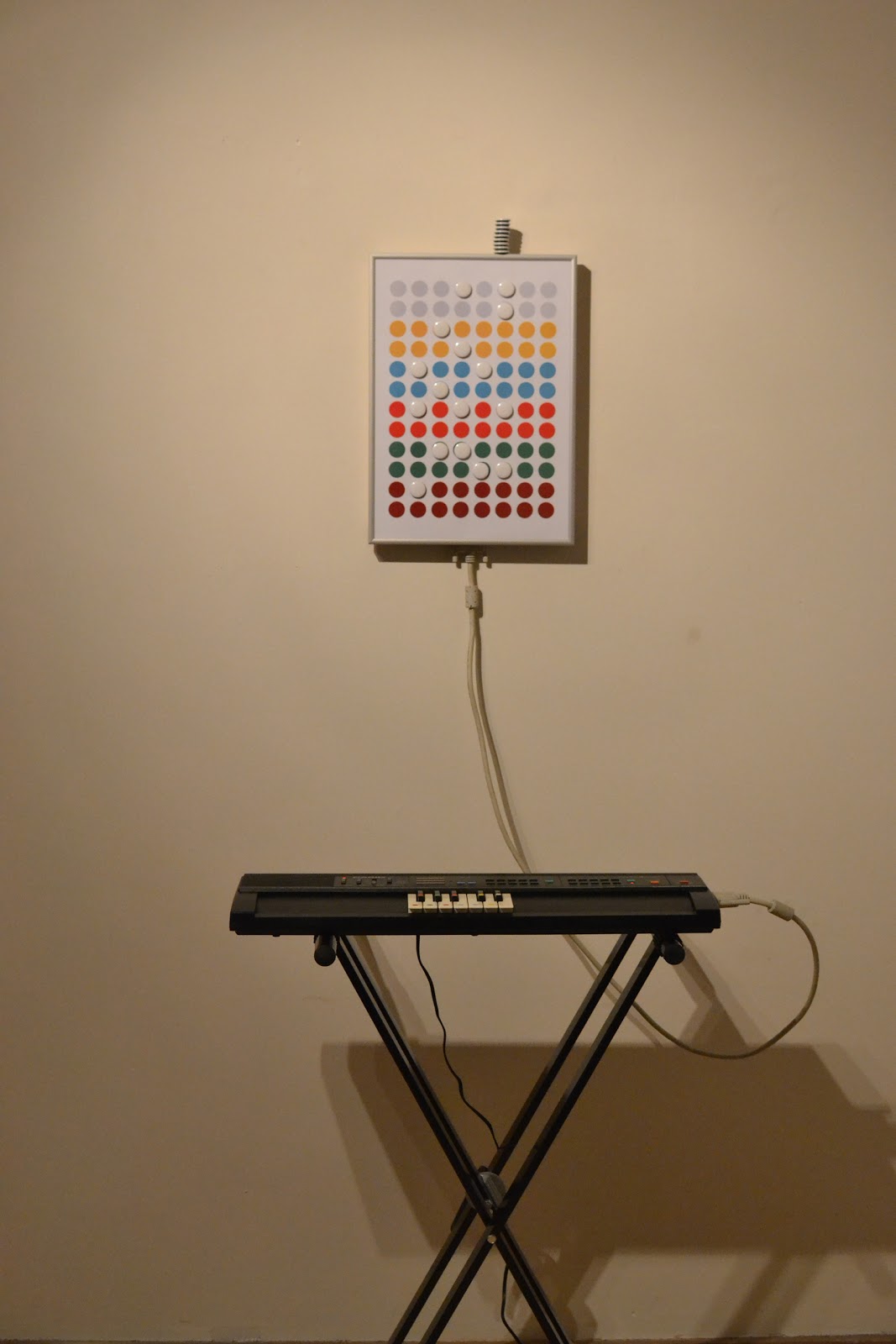
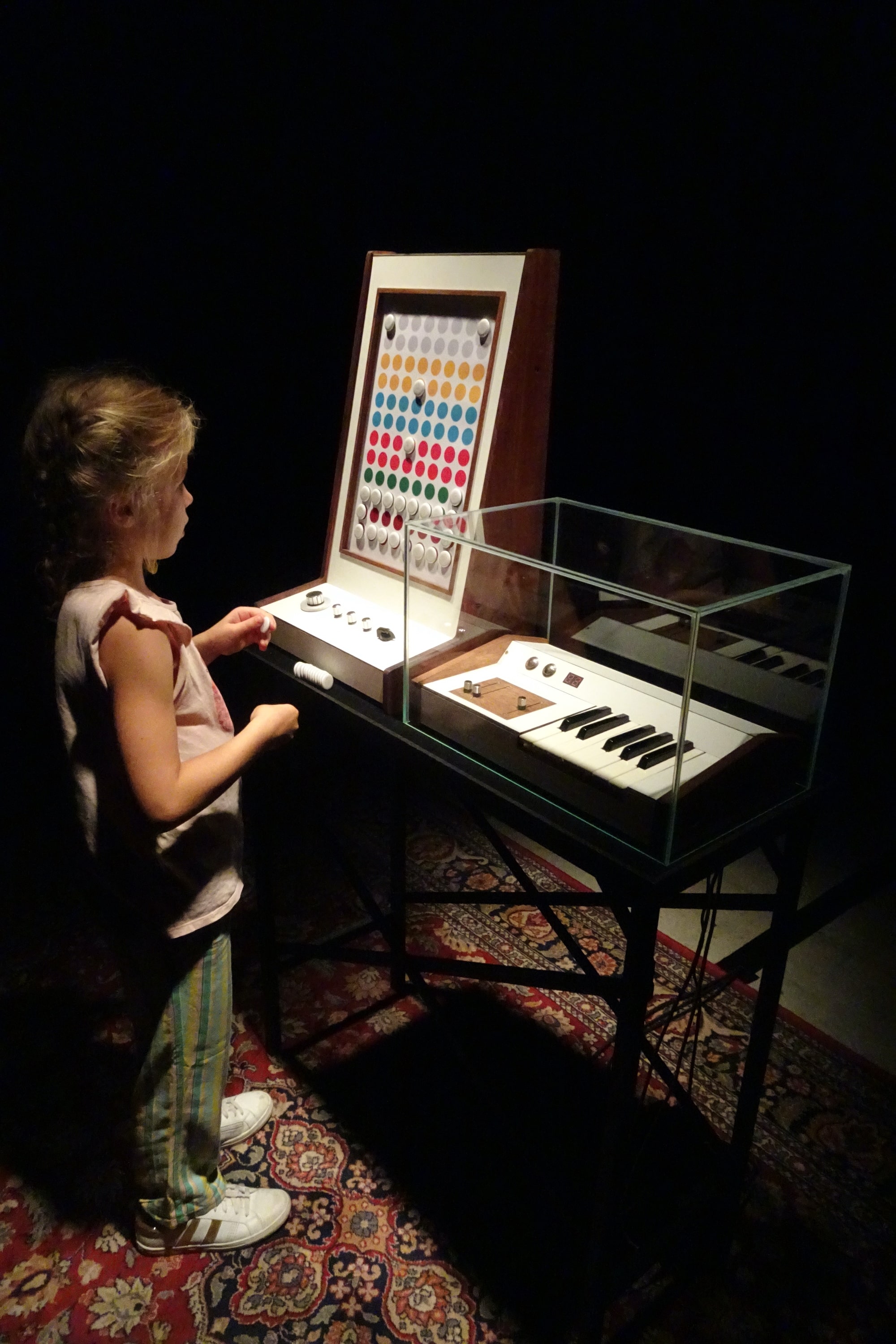
Left: Principium 1.0 with Casio keyboard. Right: the next incarnation of the instrument set up as an installation.
With the keyboard being a bit more fragile than the Casio, I decided to put it under a specially designed glass cover. Just kidding, it’s an upside down aquarium really, but it fits perfectly. With the keyboard unaccessible I had to move all the controls to the accessible sequencer side of the setup. Instead of having the matrix hardwired to the Casio tempo LED for a clock (true story), I now have a Teensy 3.2 handling everything from clocking duties to turning a detected magnet into the correct MIDI note. Attack and Release times are MIDI CC’s, and changing soundbanks sends a program change.

Playing the fader of the Principium keyboard.
Sculpting sound at the keyboard
A single step ranges from 62ms to 7.5 seconds, aka half a second to a full minute for the full sequence. How long a note is held for is a percentage of step time, and attack time then is a percentage of that, to avoid silences with long attack times and short hold times. Release time, on the other hand, is an absolute value, regardless of speed. It just felt more natural when changing speeds to have the tail end of the sound remain the same, and it creates some lovely overlapping notes if you want it.
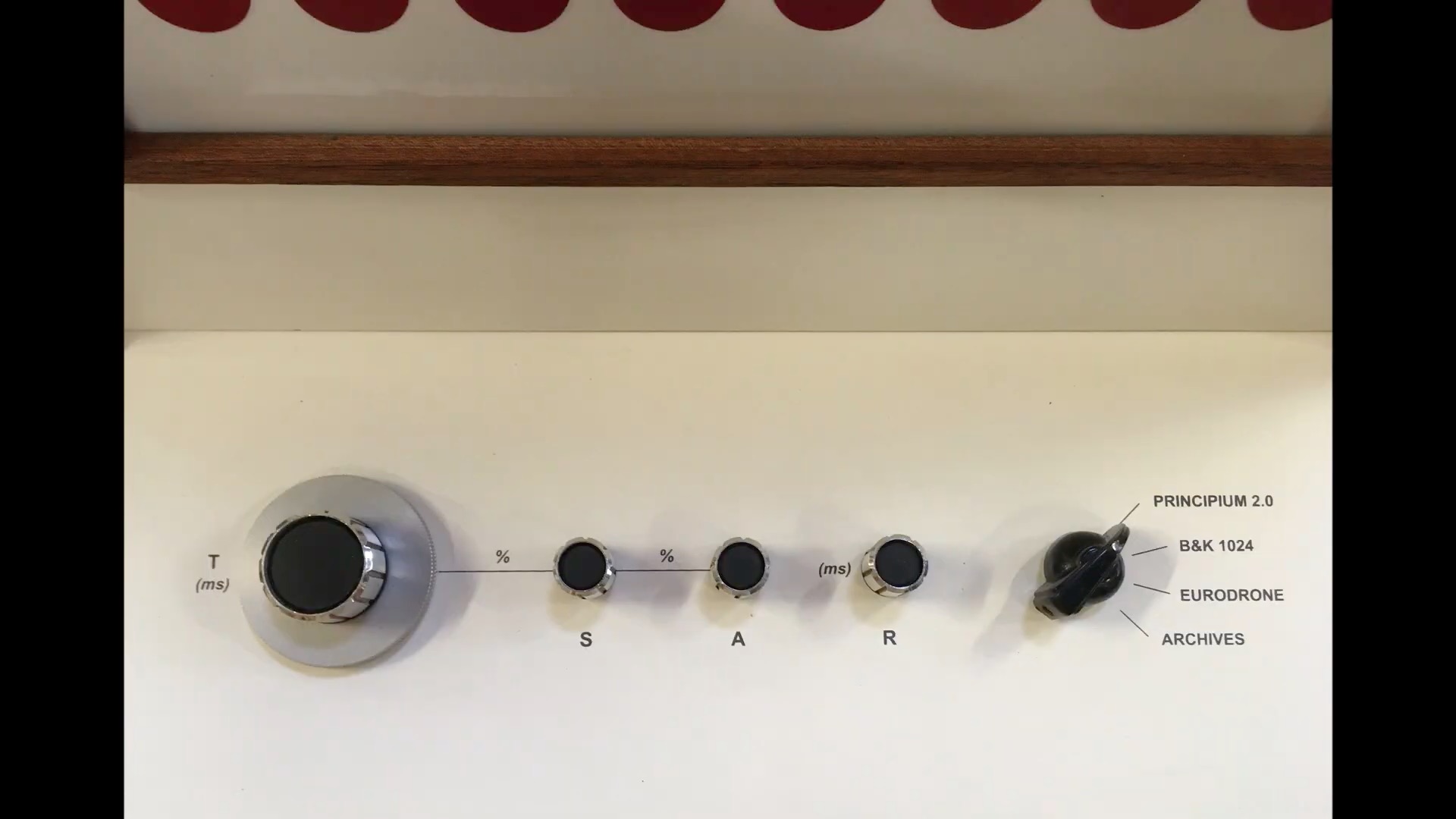
I would like to officially apologise to the synth community for labelling hold time ’S’ for sustain, as sustain traditionally is a level, not a measure of time. I know. I’m terribly sorry.
A while after shooting the footage, I swapped out the 7 segment display for an OLED. My admittedly dodgy implementation couldn’t keep up with the rapid twisting of the soundbank knob, and it would eventually display the wrong number. Thinking that I will definitely grow the number of banks, it became a nice idea to display the name of the bank as well. In all honesty, I think I like the aesthetics of the 7 segment better, but such is progress. I guess that makes it Principium 3.2, now, officially.
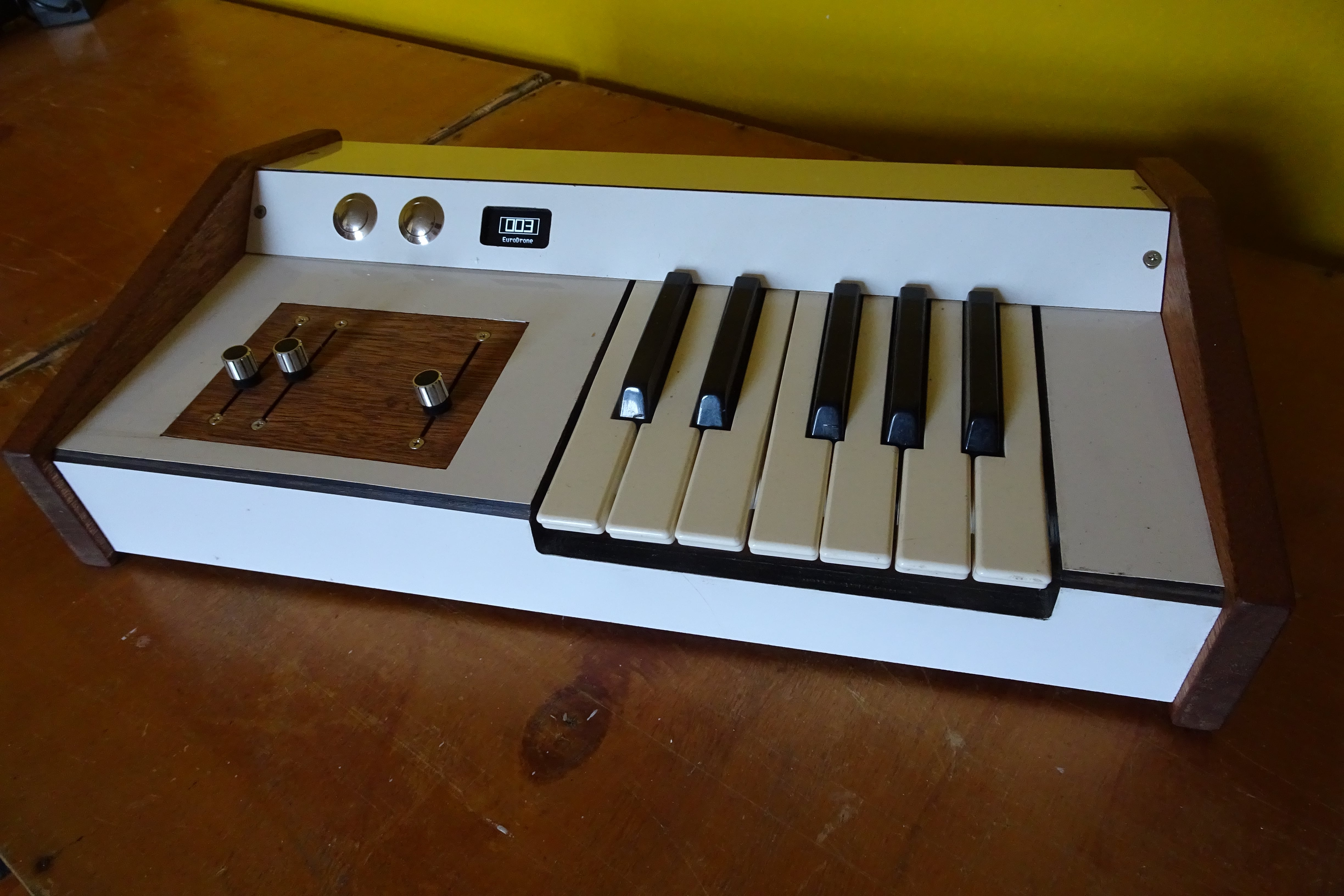
The latest addition of the OLED display.
As for the future, I’m hoping to take the interaction up a notch by having other musicians use it for their records - and preferably make their own custom sound sets. Get in touch if you’re interested!
About Kris Delacourt

Kris Delacourt. Photo Daniela Vorndran Copyright 2022 www.black-cat-net.de
Born in 1978 and based in Antwerp, Belgium, Kris Delacourt in a musician with a degree in visual arts and woodworking. He does repairs and custom mods to musicians’ FX and synths, and provides solutions and technical production for visual artists. He likes synthesizers because, when programmed right, they mask my ineptitude as a keyboard player.

